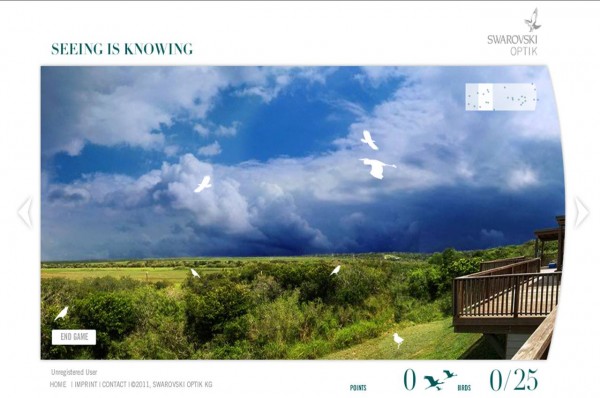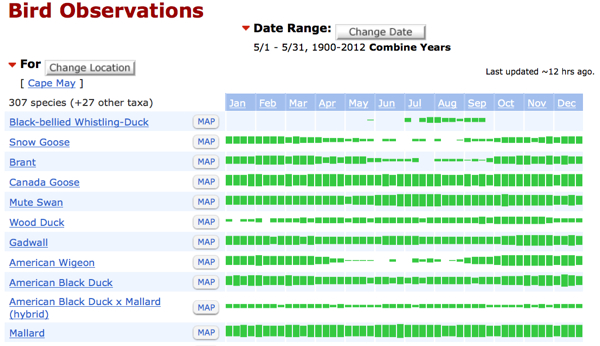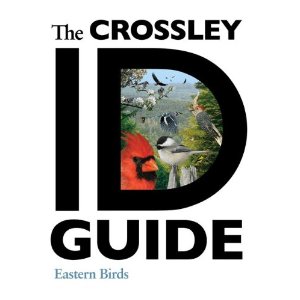Learning North American Birds (in Europe)
You know those people who look at something once and the info is glued in to their brain, seemingly permanently? I am not one of those people. I forget stuff as soon as I do not use/practice it. I love languages and birding, but neither of them are like riding a bicycle (at least not for me). But that all has almost nothing to do with learning the birds of North America.
I am in the process of hatching plans to make it out to the USA for “The Biggest Week in American Birding” in Ohio and then the “World Series of Birding” in Cape May NJ in May this year. This would be my first trip to North America and I am obviously really looking forward to seeing tons of wood warblers and other crazy birds – a trip like this is likely to offer a mind-blowing assortment of lifers, and I shudder at the thought. But in order to make any of this even remotely possible, I am going to have to put in some effort to learn some North American birds, otherwise I’ll never know if I am looking at a Laughing Gull or a Bonaparte’s Gull, let alone a Cooper’s Hawk or a Sharp-shinned Hawk.Learning the birds of an entirely new continent is always going to be challenging, but one of the advantages I quickly found to learning the birds of such a well-studied area is that there really is lots of help out there to start to figure out what is going on with the (your) crazy birds. I started by flipping through a general bird field guide – it happened to be an older National Geographic bird field guide. I was not very impressed and that wasn’t getting me very far. So I switched to something more specific and started working (almost) systematically through my various “waders of the world” and northern hemisphere wader books. But that was boring as hell.
Finally, I decided to take a more structured approach and went to eBird, and pulled out fantastic bar charts for the birds that have been recorded in Cape May, New Jersey in the month of May. Now I was getting somewhere. Export data. Excel. Sort by abundance. I now had a rough probability list of the birds I could see in the World Series of Birding. Yatzee!
So, according to my newly generated Excel sheet, I was most likely to encounter Laughing Gull (Leucophaeus atricilla), occurring in a staggering 60% of samples for the area in the second quarter of May, followed by the Red-winged Blackbird and the Northern Cardinal – what a great place to start! Having already confined that other bird guide to the pile of unloved books that lives in the corner of the room, I turned to polarizingly beautiful Crossley ID Guide to Eastern Birds. When I first bought this guide a few months ago – just out of sheer interest – I was mesmerized by the beauty of the plates and all the detail hidden, just waiting to be discovered. But it was only in the last couple of days that I really discovered just how useful this guide could be to a learning birder. Armed with my fancy eBird/Excel sheet, I started going through the list from Laughing Gull direction European Goldfinch, 297 species later. So far, I have only managed to work my way down to Gray Catbird (Dumetella carolinensis) – species number 10 – so this little exercise is going to take a while 😉
The great thing about Richard Crossley’s plates is that, for each species, I could quietly and carefully work my way through the plates to get a feel for the different images of the bird in various positions, poses, plumages and geographical variations. What a great way to get a feel for the variation and detail!
I then opened up the birding game to go virtual birding in Corpus Christi, Texas. It might not be Cape May or Ohio, but at least the birds are North American! Not wanting to push it too far, I started at the easiest level “hiker” and started exploring the world of North American birds. After each guess, I would refer back to the Crossley guide and explore that species to get a good feel for the species and the details I should be looking out for. After a while, I started to get cocky and stepped it up a notch to the next level “birder”. I naturally sucked, but I could definitely see an improvement, and those small successes were a great inspiration.
 Now all I need to do, is master the remaining 400+ species possible in the areas I will be visiting and I will be all set.
Now all I need to do, is master the remaining 400+ species possible in the areas I will be visiting and I will be all set.
Sometimes I wish my head had a USB port.
Happy birding,
Dale Forbes



Dale very interesting post. I intend to visit the USA later in the year and am in the same position as you I am however trying to learn about all the birds that visit Martha’s Vineyard MA. This is just over 300 of which I think I know about a half. I am also using Crossley, Warblers by Jon Dunn and Kimball Garrett, Sibley Birds of Eastern North America, Birds of Martha’s Vineyard by Griscom written in 1959 !! I also am using the iBird PRO app which is great for sound as well as testing myself using Larkwire.
good luck!
That is exactly how I prepare for birding in new locations…use eBird to find out what is there and then study them in the field guides.
That is exactly how I prepare for birding in new locations…use eBird to find out what is there and then study them in the field guides.
Hi Robert,
ya, much has been said about the worth of Crossley’s ID Guide and his approach, but this was one situation in which I could not imagine a better approach to learning about new species for birds are not always perfectly side on with painted feathers. I was never a fan of photo ID guides. I now am.
You might find checking out the individual species on YouTube.com helpful. You’ll see the bird in action and may hear its calls/songs
Hi Hilke, that is an excellent idea – the great thing about video is that you can get a feel for how a species moves and behaves. The Internet Bird Collection is also bound to be a great resource in that regard.
Just met Richard Crossley at the Space Coast Birding and Wildlife Festival in Titusville, FL, where he talked about the fact that EXPERT birders seem to find his book lacking in detail. Beginning and intermediate birders pick up The Crossley ID Guide and after thumbing through it, typically experience an “oh! I get it!!!” epiphany as a thousand discrete pieces all fall into place. Perspective is everything, and that’s what this book instantly provides that all the othe field guides I own had failed to do.
From what I understand, you will have a fabulous time at Magee Marsh. As for Cape May, what can anyone say about that place to do it justice?
Cooper’s Hawk? Very flat, elongated head is easiest way to distinguish from Sharp-shinned.
This is precisely how the Crossley guide was designed to be used. And I think it – combined with a good, more traditional, field guide – is the best way of learning new birds.
Hi, how did you export the data from the bar chart data? I’m also planning a trip to Cape May in May.
Hi again, you can download checklists for different sites. I put the links for Cape May, Prospect Park, and Central Park here: https://dogsbirdsart.wordpress.com/2012/03/03/how-to-prepare-a-list-of-birds-for-a-birding-trip-to-the-usa/
Read my article about American warblers Vs. European warblers, inspired by the article on 10,000 birds: https://10000birds.com/this-is-not-a-wood-warbler.htm
Here is my article: https://birdsofohio.webnode.com/news/american-warblers-are-real-warblers/
Read my article about American warblers Vs. European warblers, inspired by the article on 10,000 birds: https://10000birds.com/this-is-not-a-wood-warbler.htm
Here is my article: https://birdsofohio.webnode.com/news/american-warblers-are-real-warblers/